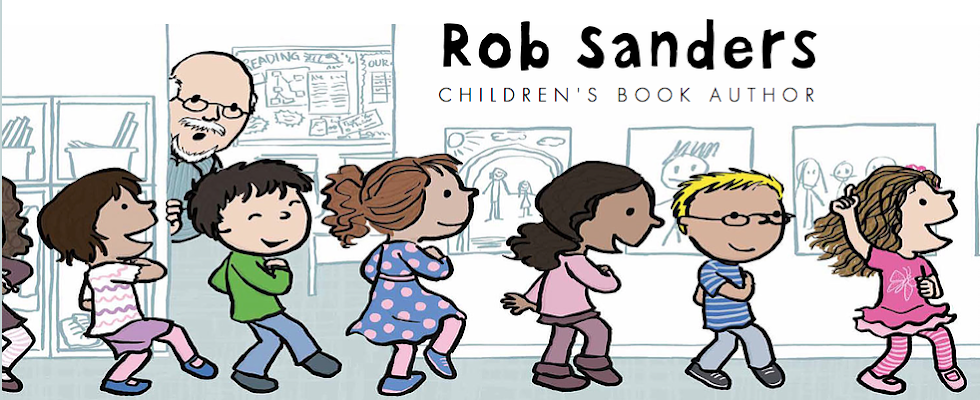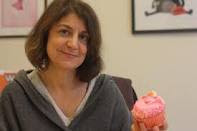Week of July 22, 2012—Common Problems in
Picture Book Manuscripts
Wednesday, July 25--Too Much Backstory
|
|
|
|
WHAT THE GUY
IN THE WHITE HAT SAYS ABOUT BACKSTORY:
“It’s all the
information that comes before the actual story.”
|
WHAT THE GAL
IN THE DARK HAT SAYS ABOUT BACKSTORY
“It’s an info
dump!”
|
Backstory
is also called exposition, which literally means telling. I hate to be the bad guy here, but there’s hardly ever
(dare I say, NEVER?) a place for backstory in a picture book. Unfortunately, too
much backstory is another one of problems I frequently see in the picture book
manuscripts I critique.
Let
me give you an example of backstory using the well-known nursery rhyme “There
Was an Old Woman Who Lived in a Shoe.”
There was
an old woman who lived in a shoe.
She had so
many children, she didn't know what to do.
She gave
them some broth without any bread;
And whipped them all soundly and put them to bed.
The backstory for this nursery rhyme
might go something like this:
Deep
in her sole, Mavis contemplated giving the children a tongue lashing. But the
tongue of the old shoe house was ripped and cracked, and probably wouldn’t
stand up to the abuse. At 85, Mavis had lived inside this shoe for half her
life. “We’ll have a real home soon enough,” her cobbler husband had promised
for years, but a house never came. Instead, the children came, one after
another.
If
Mavis, were honest, she would admit that she had lost count of how many
children she actually had. Once she had begun her second round of alphabetical
names, it all become a blur.
With
all these children you would think she could get some help around the shoe, but
no. She cooked, cleaned, did the laundry, and the rest of the shoehold chores
while those children played ring-around-the-rosey with the shoe laces
and peek-a-boo through the eye holes.
It
didn’t help matters that today was the twelfth straight day of ninety degree
weather, with no rain in sight. The heat index inside the old leather shoe must have been one hundred and ten.
Mavis plodded into the kitchen to
prepare dinner for her brood. I have half
a mind to serve them broth for dinner, she thought.
Granted, that backstory is
interesting, but we seem stuck waiting for something to happen. Backstory
often:
Q Slows down the forward momentum of a
story
Q Overloads readers with unnecessary information
Q Overemphasizes character and setting
descriptions
Q Lacks action
Q Keeps us from knowing the problem of the
story
Q Bores the reader/listener
In
a picture book, backstory can also:
Q Keep the illustrator from telling
his/her half of the story
Q Eat up word count
Backstory
may be helpful for an author. If you are the author of Mavis’ (aka: The
Little Old Woman Who Lived in a Shoe) story, you may need to know all the
details about her husband, the composition of the shoe, the number of children she has,
Mavis’ age, and so on in order to write a compelling story. But just because you
know the backstory, doesn’t mean you have to write it into your story.
Most
writing gurus suggest starting in the middle of the action. When it comes to
picture books, often the main character and his/her problem is introduced on
the first page, or first line. This gets the reader into the story instantly and allows the
writer to have plenty of words and pages remaining to build the plot.
Some
writers try to trick us into thinking they don’t have backstory. They introduce
the character and problem early on, but then start giving us tons of
information before the character starts solving the problem. If we don’t get quickly from the introduction of the character and
problem to the first attempt to solve the problem, we probably have backstory
that needs to be weeded out.
It’s Your Turn:
u Look
back at your latest picture book manuscript, is there some backstory you can
eliminate? If so, get busy!
v Not
sure if you have too much backstory? One simple way to find out is to type
up your manuscript in the format of a first-page critique. Start the story at
the very top of a sheet of paper, and then type in 12-point type, double spaced.
When you get to the bottom of the page, stop. Read back over your story.
Underline when the character and his/her problem are introduced on the page.
Then underline where the first attempt to solve the problem occurs. If you have
lines of copy before we know the character and his problem, you probably have backstory.
If you have lots of text between the introduction of the character and problem
and the first attempt to solve the problem, that’s probably back story, too.












